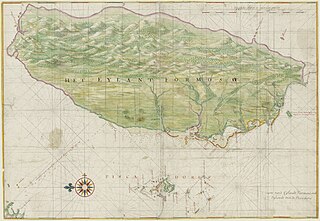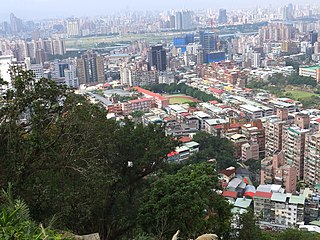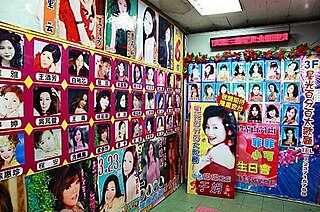 W
WThe recorded history of Taipei began with the Han Chinese settling of the Taipei Basin in 1709, leading up to the formation of the national capital of Taiwan and high-tech industry hub and that is now Taipei City. Other notable dates include the 1895 annexation of Taiwan by Japan, during which Taipei began to grow more rapidly, and in the 1950s, the USA's provision of financial assistance to the Republic of China government, after which the city continued on a path of fast structural and industrial growth.
 W
WThe 228 Peace Memorial Park is a historic site and municipal park located at 3 Ketagalan Boulevard, Zhongzheng District, Taipei, Taiwan. The park contains memorials to victims of the February 28 Incident of 1947, including the 228 Memorial Monument that stands at the center of the park and the Taipei 228 Memorial Museum, housed at the site of a former radio station that operated under Japanese and Kuomintang rule. The National Taiwan Museum stands at the park's north entrance. The park also has a bandshell and exercise areas.
 W
WThe Cafe Astoria is the first Western style bakery in Taiwan. It is located in the Zhongzheng District of Taipei, Taiwan on Wuchang Street across from the City God Temple.
 W
WThe Chien-Cheng Circle or Taipei Circle, was a bustling food market and a city landmark in Datong District, Taipei, Taiwan. It existed 96 years from its opening during the Japanese colonial era, to its official closing on Sunday, 2 July 2006 after years of decline in resulting from two conflagrations in the 1990s and an unsuccessful project to revitalize the market in 2003. After numerous attempts at re-planning and reopening, the building at the site was eventually demolished in 2016 and a public plaza and park opened in 2017.
 W
WThe Chinese Culture and Movie Center is a former movie studio and tourist attraction located in the Shilin District of Taipei, Taiwan. It is owned by the Central Motion Picture Corporation. In its early period, it functioned as a film and TV drama filming location and studio. After the Republic of China government lifted martial law, many of the TV dramas and movies produced by the Center began filming in Hong Kong and mainland China. The Chinese Culture and Movie Center closed indefinitely in 2008.
 W
WThe Indigenous Ketagalan Boulevard protest is an ongoing protest in Taiwan started on Ketagalan Boulevard in Taipei City by Taiwanese aborigines in February 2017 asking for more official recognition of land as traditional territories, in particular for the possibility of private land to also be designated as indigenous territory, which was not allowed for by the February 2017 regulations brought forward by the governmental Council of Indigenous Peoples.
 W
WJingmei is a neighborhood in Taipei City. Formerly an administrative district, in 1990 it merged with Muzha District to create Wenshan District.
 W
WLin Wang was an Indian elephant that served with the Chinese Expeditionary Force during the Second Sino-Japanese War (1937–1945) and later relocated to Taiwan with the Kuomintang forces. Lin Wang lived out most of his life in the Taipei Zoo and unquestionably was the most popular and famous animal in Taiwan. Many adults and children alike affectionately called the bull elephant "Grandpa Lin Wang."
 W
WLiugongzun is the name of a system of canals and irrigation ditches that once crisscrossed the city of Taipei, Taiwan. Most of the canals were covered over by roads and streets in the 1970s due to increasing volumes of traffic and diminishing necessity of water transportation and irrigation.
 W
WMuzha/Mucha (Chinese: 木栅; pinyin: Mùzhà; Wade–Giles: Mu4-cha4; Pe̍h-ōe-jī: Ba̍k-sa; lit. 'wood fence') was a district in Taipei City, Taiwan. The name refers to wooden fences built in the region to defend against attacks by Taiwanese aborigines. In 1990, it merged with Jingmei District to create Wenshan District.
 W
WA Red Envelope Club is a form of Cabaret in Taiwan that originated in Taipei in the 1960s as an imitation of Shanghai Cabaret. In these cabarets, female singers sing old Chinese songs from the 1920s to 1950s to mostly older men, many of whom were soldiers in General Chiang Kai-shek's Kuomintang army that fled Mainland China after the Chinese Civil War. The cabarets get their name from the fact that the audience gives the singers, who they appreciate, money in red envelopes. The remaining clubs are mostly located in the Ximending District of Taipei on Hankou Street, Emei Street, and Xining South Road.
 W
WThe Remains of Taipei Prison Wall are located in Zhongzheng District, Taipei, Taiwan at the end of Aiguo East Road and Jinshan South Road adjacent to the Southern Taipei operations center for Chunghwa Telecom. Approximately 100 meters of wall exist on both sides of the Chunghwa Telecom property. The walls were built during Japanese rule.
 W
WTaihoku Prefecture was an administrative division of Taiwan created in 1920, during Japanese rule. The prefecture consisted of modern-day Keelung, New Taipei City, Taipei and Yilan County. Its government office, which is now occupied by the Control Yuan of Taiwan, was in Taihoku City.
 W
WThe Taihoku Air Raid that took place on 31 May 1945 was the largest Allied air raid on the city of Taihoku during World War II. Many residents were killed in the raid and tens of thousands wounded or displaced.
 W
WThe 2014 Taipei Metro attack was a mass stabbing spree that took place on 21 May 2014, directed at random civilians on a Taipei Metro train near Jiangzicui Station, resulting in four deaths and 24 injuries. It was the first fatal attack on the city's subway system since operations began in 1996. The suspected attacker, Cheng Chieh, then 21, was arrested after the attack. He was sentenced to 144 years in prison and four death sentences, and was executed on 10 May 2016.
 W
WThe Taipei Story House, formerly known as the Yuanshan Mansion, is a historic house in the Zhongshan District, Taipei, Taiwan. It is now open as a museum in Taipei Expo Park.
 W
WTreasure Hill is a community in Taipei, Taiwan. Originally an illegal settlement, it was founded by the Kuomintang military veterans at the end of the 1940s and served originally as an anti-aircraft position.
 W
WThe Taipei City Walls were established in 1884 in Taipei Prefecture, Qing Taiwan. Shortly after the Qing dynasty established Taipeh Prefecture in 1875, Prefect Chen Hsing-chü (陳星聚) ordered the foundation of a new prefectural capital, with enclosing wall in 1879. However the soil proved too soft to support so heavy a structure, and the project was halted. Subsequently, governor of Fujian Cen Yu-ying (岑毓英) and Taiwan magistrate Liu Ao (劉璈) undertook successive surveys to determine the proper location of the wall's foundations. Craftsmen were recruited for the construction in 1882, and the wall was completed in 1884.
 W
WTaiwan's Wild Lily student movement or March student movement was a six-day student demonstration in 1990 for democracy. The sit-in at Memorial Square in Taipei was initiated by students from National Taiwan University. Participation quickly grew to 22,000 demonstrators. The Wild Lily demonstrators sought direct elections of Taiwan's president and vice president and new popular elections for all representatives in the National Assembly.
 W
WThe Wild Strawberries Movement is a protest movement in Taiwan begun on 6 November 2008 after the visit of the People's Republic of China's ARATS chairman Chen Yunlin to the island. Police actions on protests aimed at Chen suppressed the display of Taiwan's national flag and the playing of Taiwanese songs. This prompted a group of 400 students in Taipei, Taiwan to begin a sit-in in front of the Executive Yuan in protest of Taiwan's Parade and Assembly Act.
 W
WThe Yangmingshan American Military Housing, is a historical site located in Yangmingshan, Taipei, Taiwan. It is located on a 13.88 hectare plot of land near the Chinese Culture University in Shantzehou with around 150 old American buildings—for U.S. Military officers, Advisors and their dependents in Taiwan—in various states of preservation.
 W
WZhongshan Hall is a historical building which originally functioned as the Taipei (Taihoku) City Public Auditorium. It is located at 98 Yanping South Road in the Ximending neighborhood of Zhongzheng District, Taipei, Taiwan. In 1992, it was recognized by the government as a historic site.